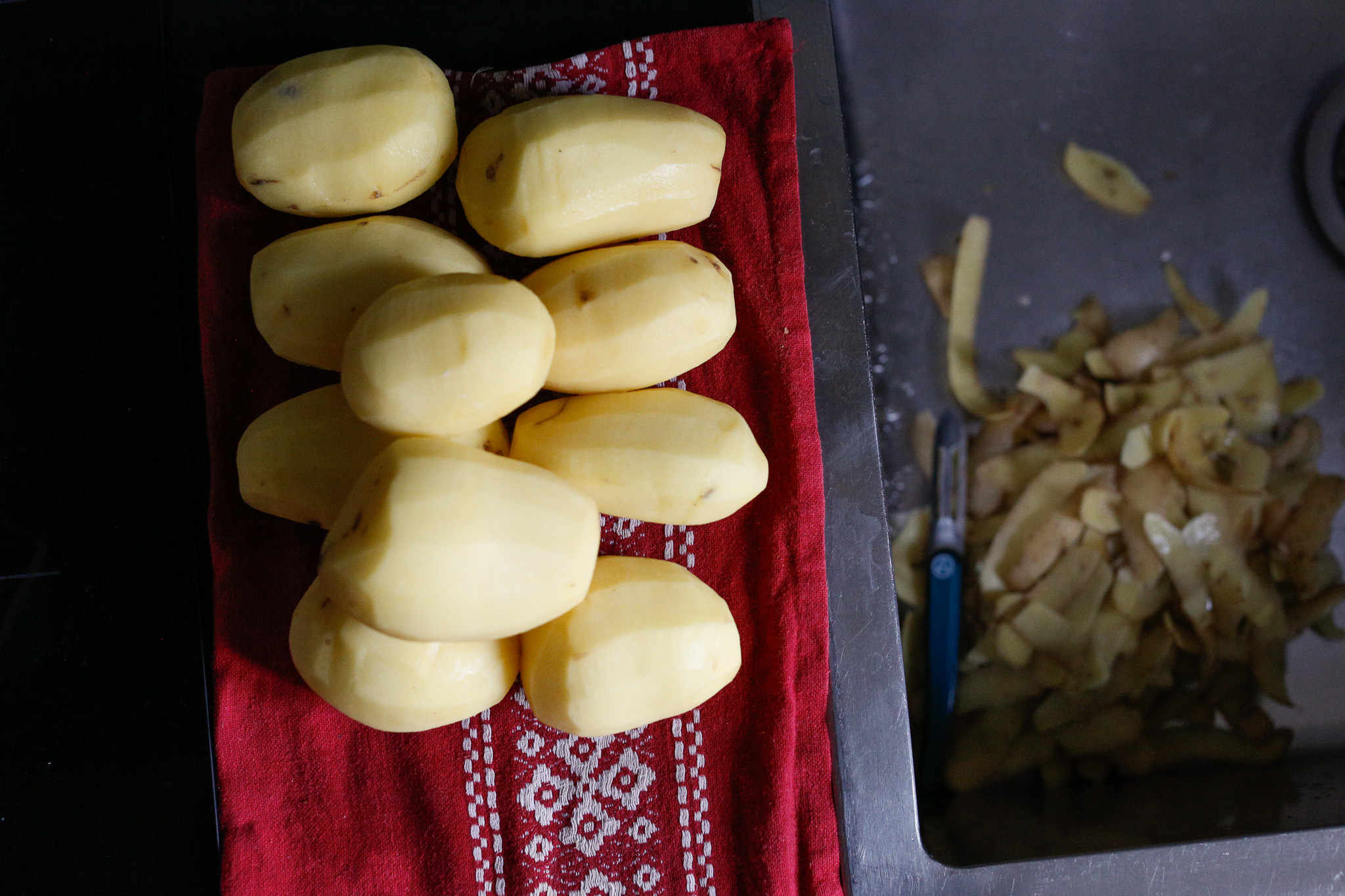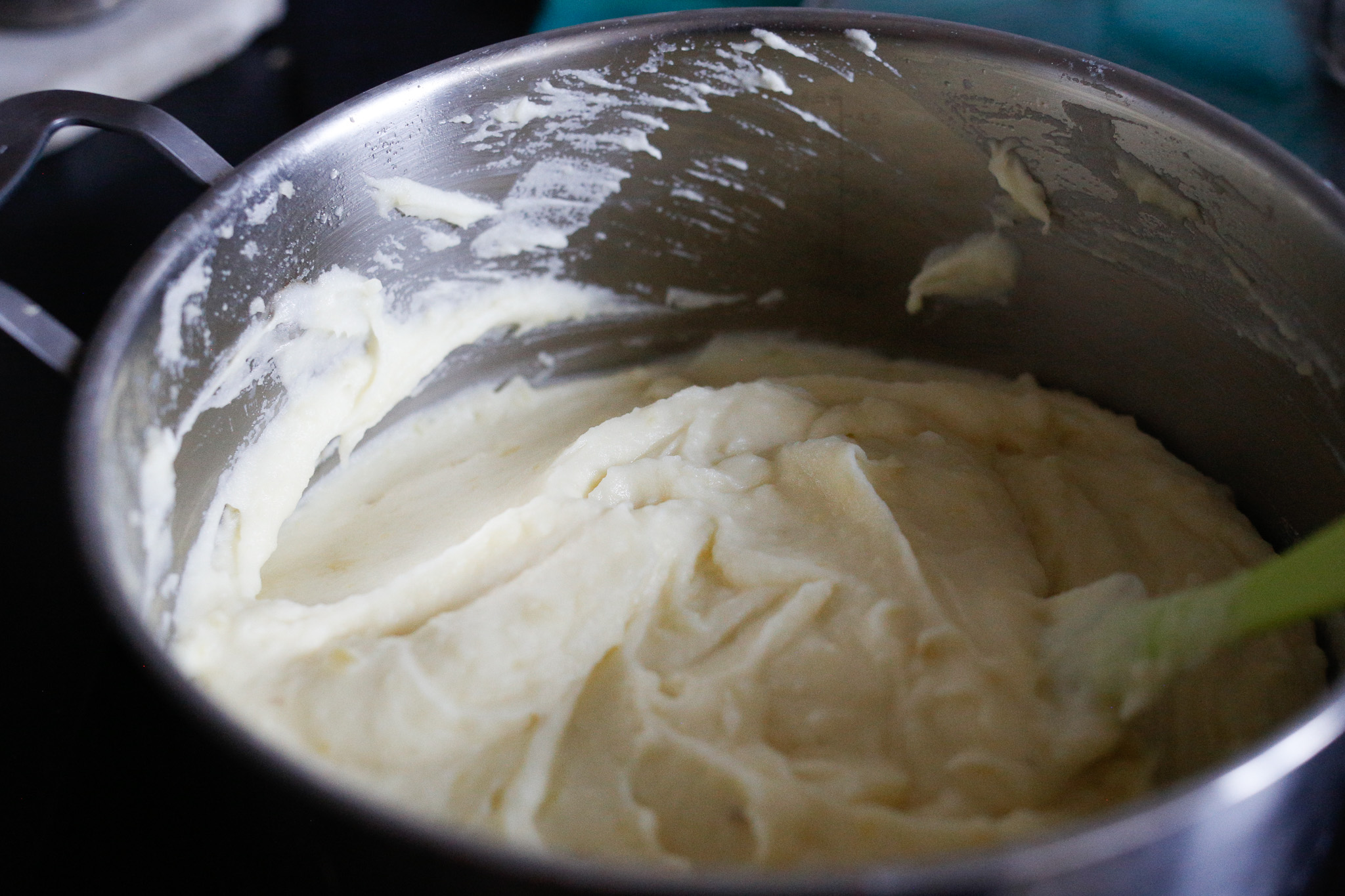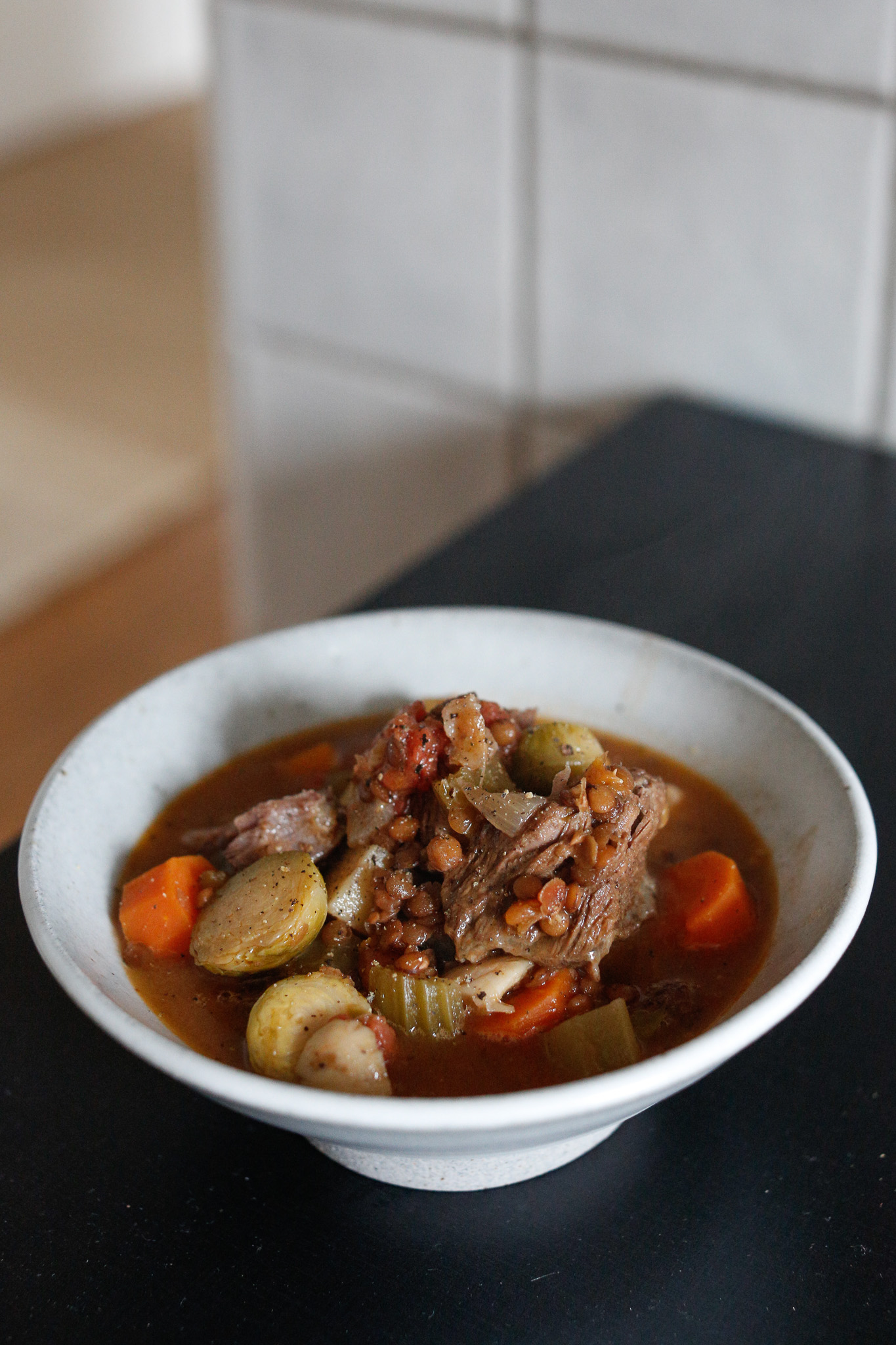Ingredients
8 generous servings
Equipment:
hand held electric beater or standing mixer
large soup pot
350 ml / 1.5 cup whole milk
100 g / 7 tbsp butter, cubed
Sea salt – 80 g / 3 tbsp
Extra salt, butter and milk to taste
Preparation
1. Skin your potatoes and cut them into medium cubes in order to cook faster. Do your best to keep the size similar so that they cook evenly. Put them in your pot and cover with water.
2. Bring your water to a boil and add your sea salt. Plan on cooking your potatoes for at least 20 minutes before you start checking if they are done.
3. Meanwhile, in a small saucepan, heat your milk on low. You want your milk warm so that they don’t shock your potatoes when you add it in. I don’t melt my butter so that it melts as it’s being mixed.
4. Test your potatoes before declaring them cooked by sticking a knife in them, they should provide no resistance, the knife going in and coming out smoothly. I am known for under-cooking my potatoes which will create small lumps in your mash. So be sure they are cooked.
5. Drain your potatoes. Be mindful of pouring the pot of boiling water away from you, steam burns! After draining, add your potatoes back into your pot.
6. Before turning on your beater, crush them down with the mixer paddles to break apart the potatoes. Then start beating on low and gradually work your way up to medium.
7. Once you get a good mix, add ⅓ of your milk & butter and continue adding little by little as you go.
8. When it’s all mixed in, taste your potatoes for seasoning. Do they need some more salt? Would you like them creamier? More butter? Adjust to your liking and enjoy!
Step 1
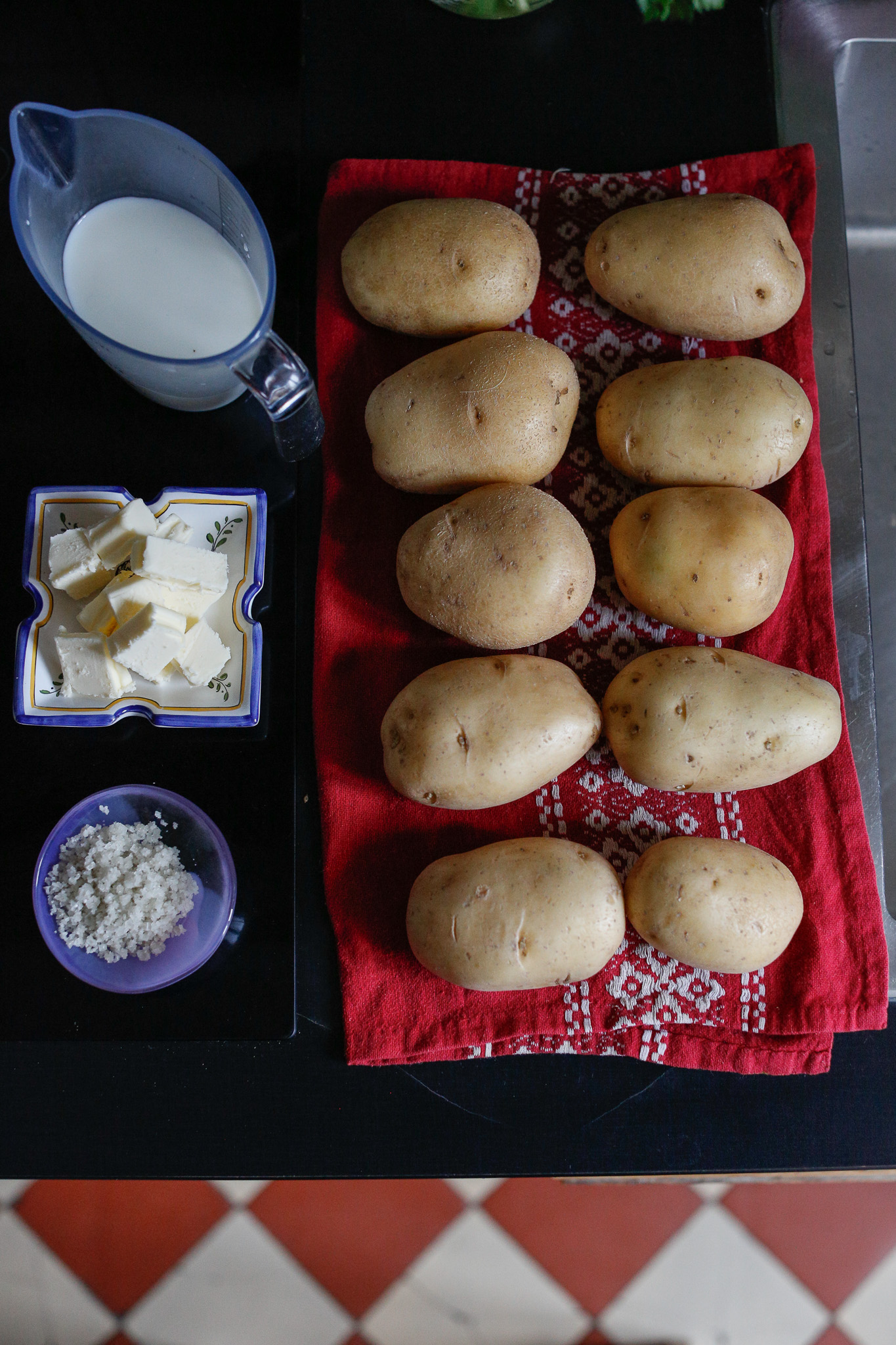
Gather all your ingredients. Potatoes, milk, butter, salt
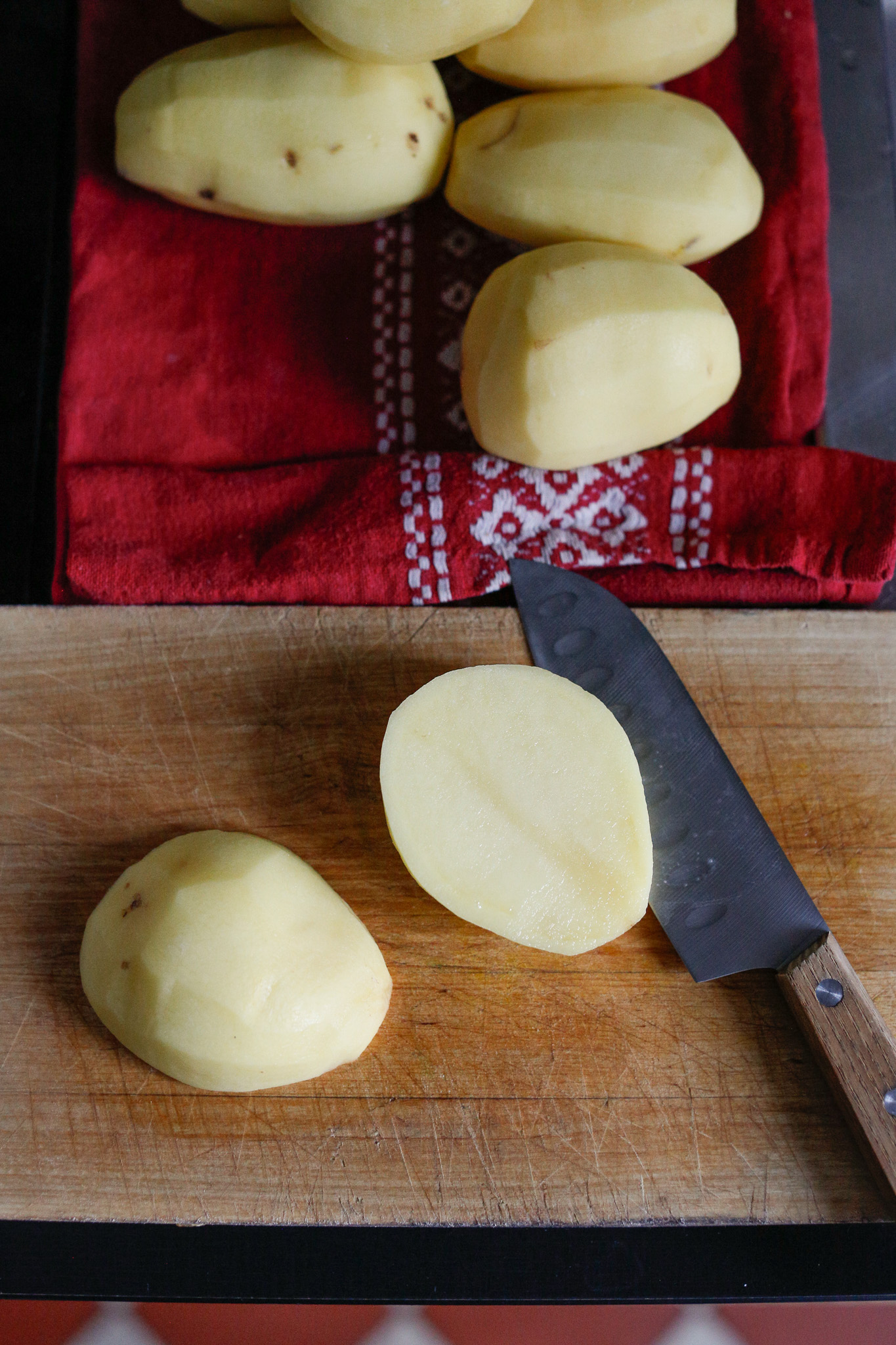
Peel all of your potatoes and cut them in half before cubing them
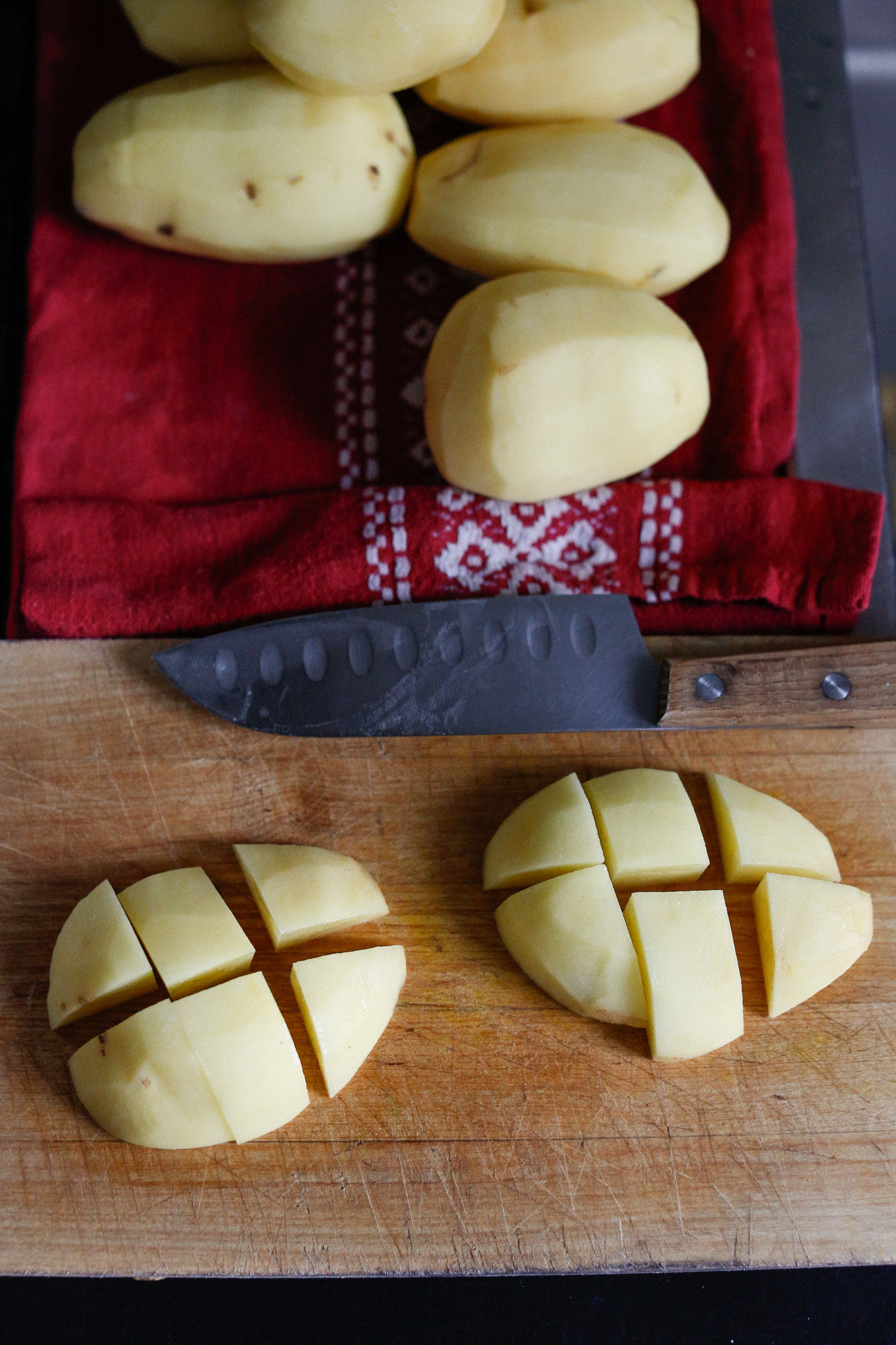
Cut your halved potatoes into medium cubes. Do your best to cut them approximately the same size in order to have similar coo time
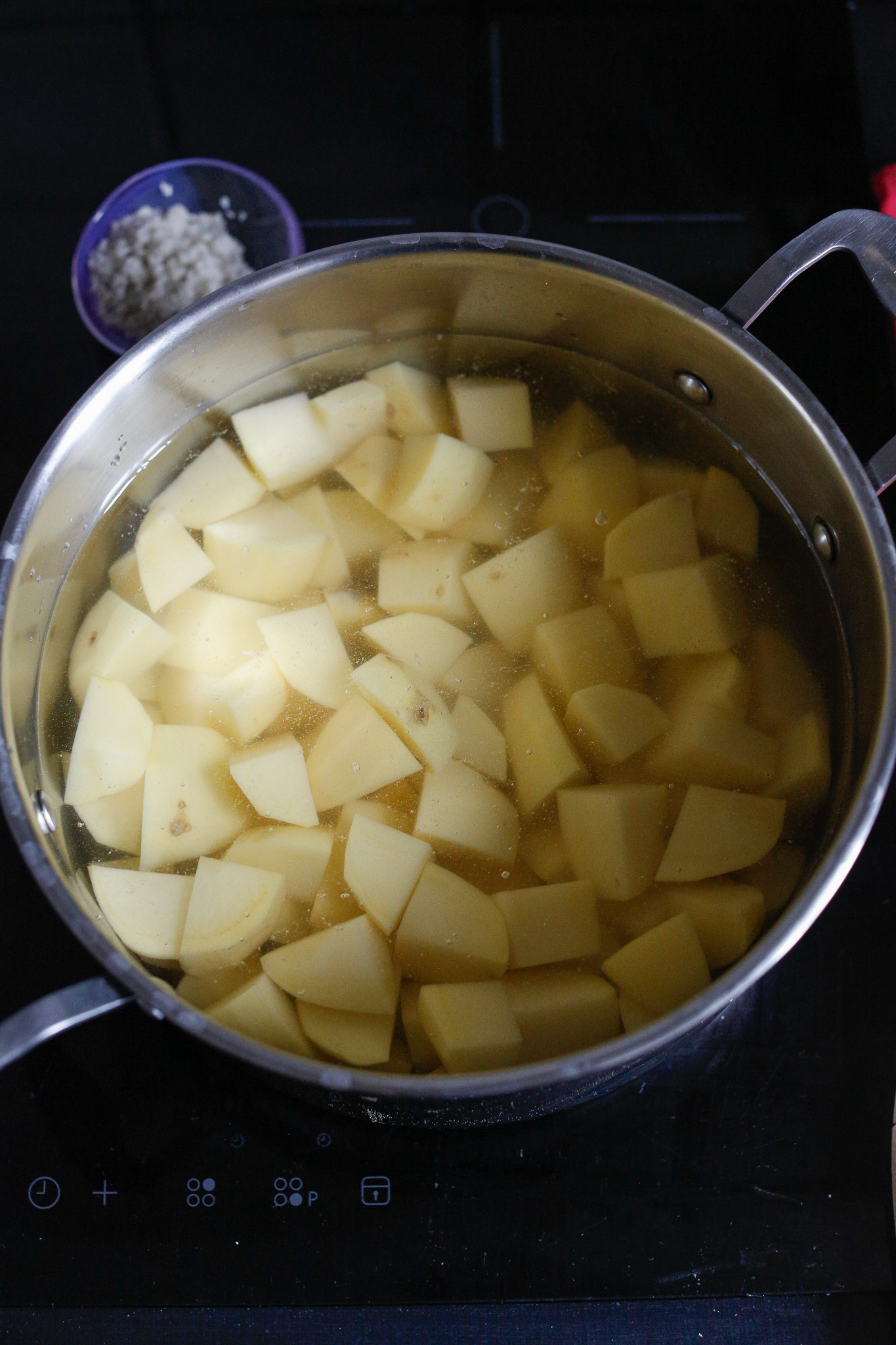
Put all your cut potatoes in a pot and cover them with water, bring to a boil and add your salt and stir
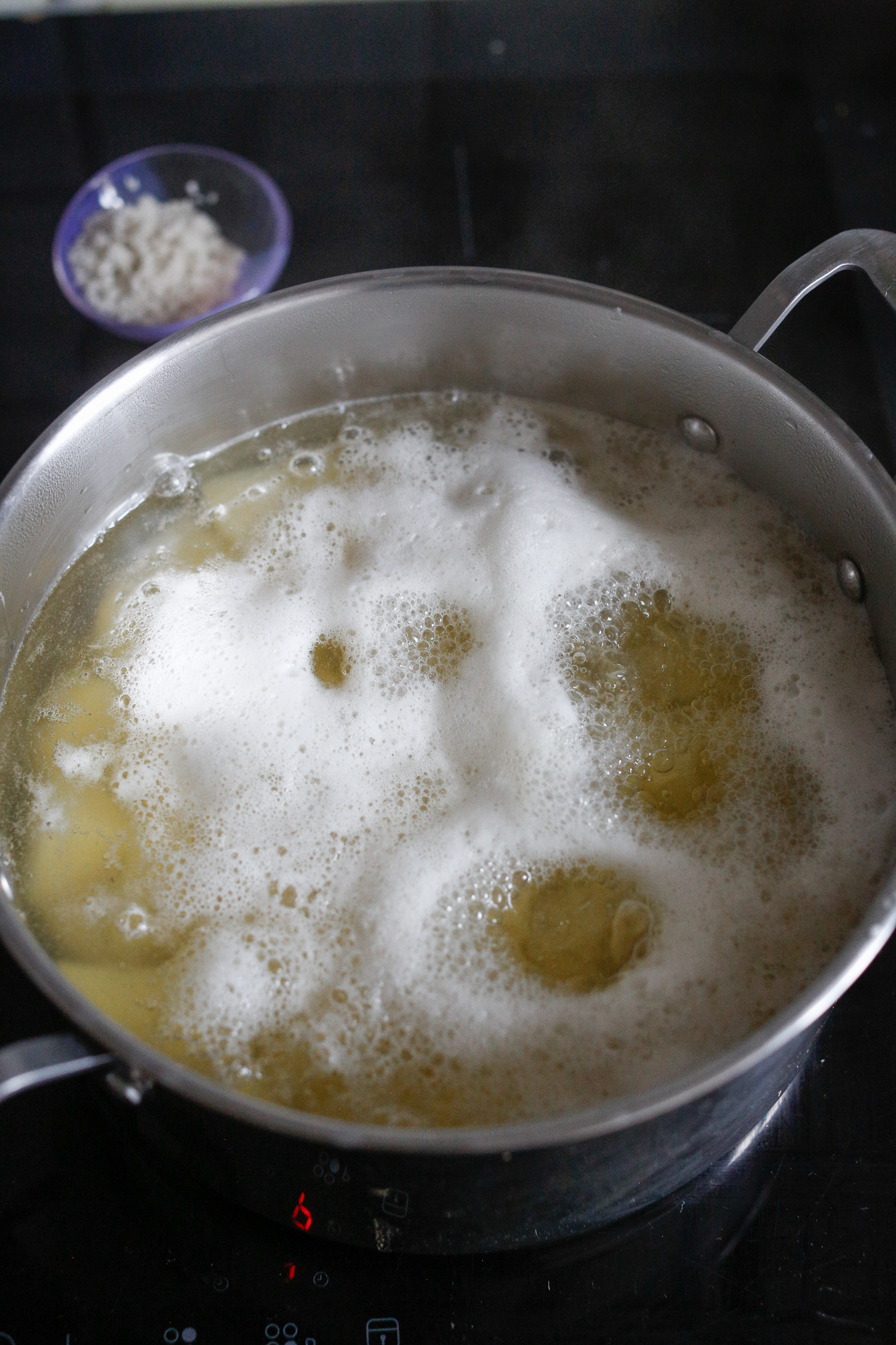
Foam may rise to the top of the water. This is the starch emerging from the potatoes. There is no need to skim it off
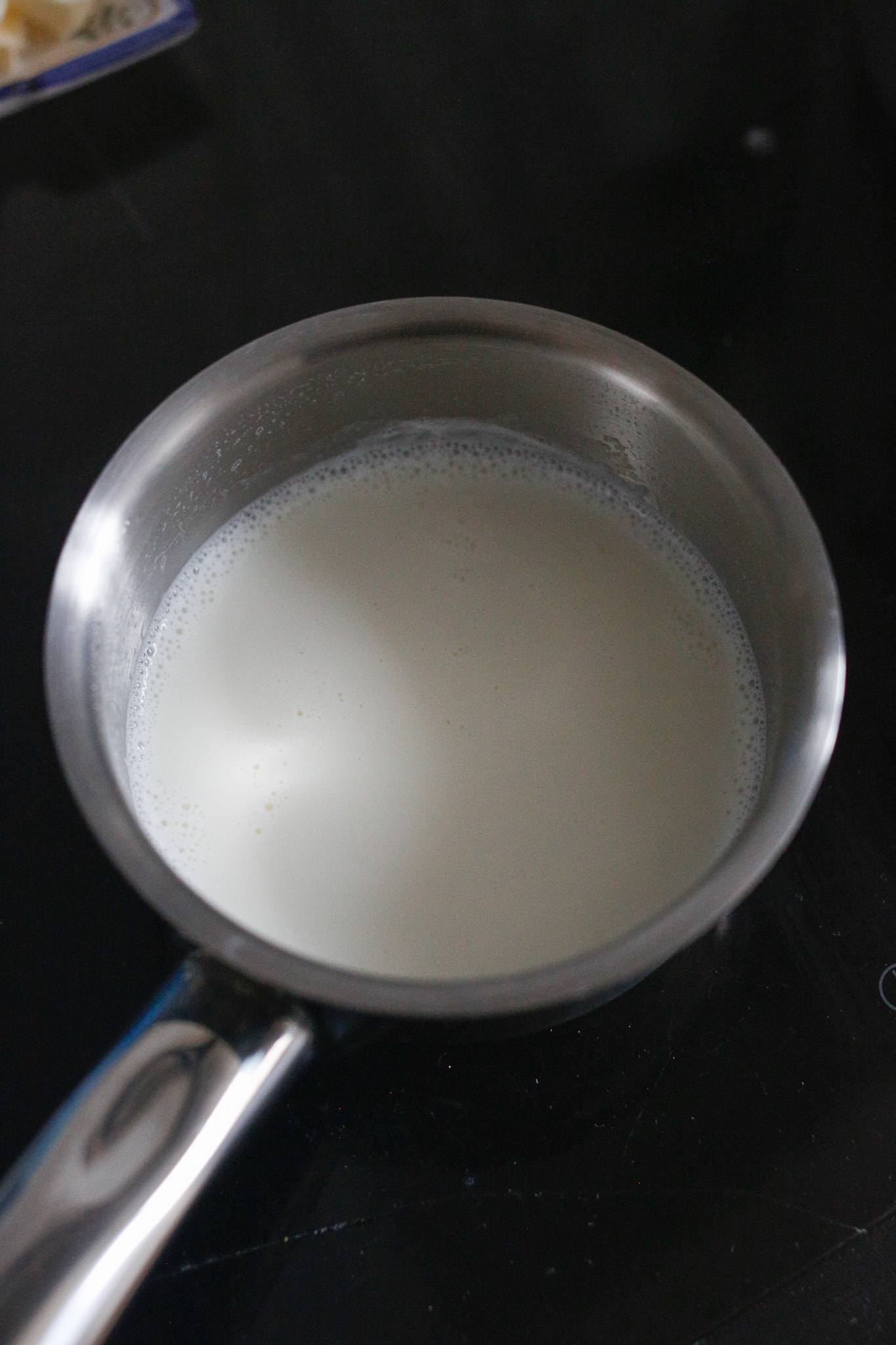
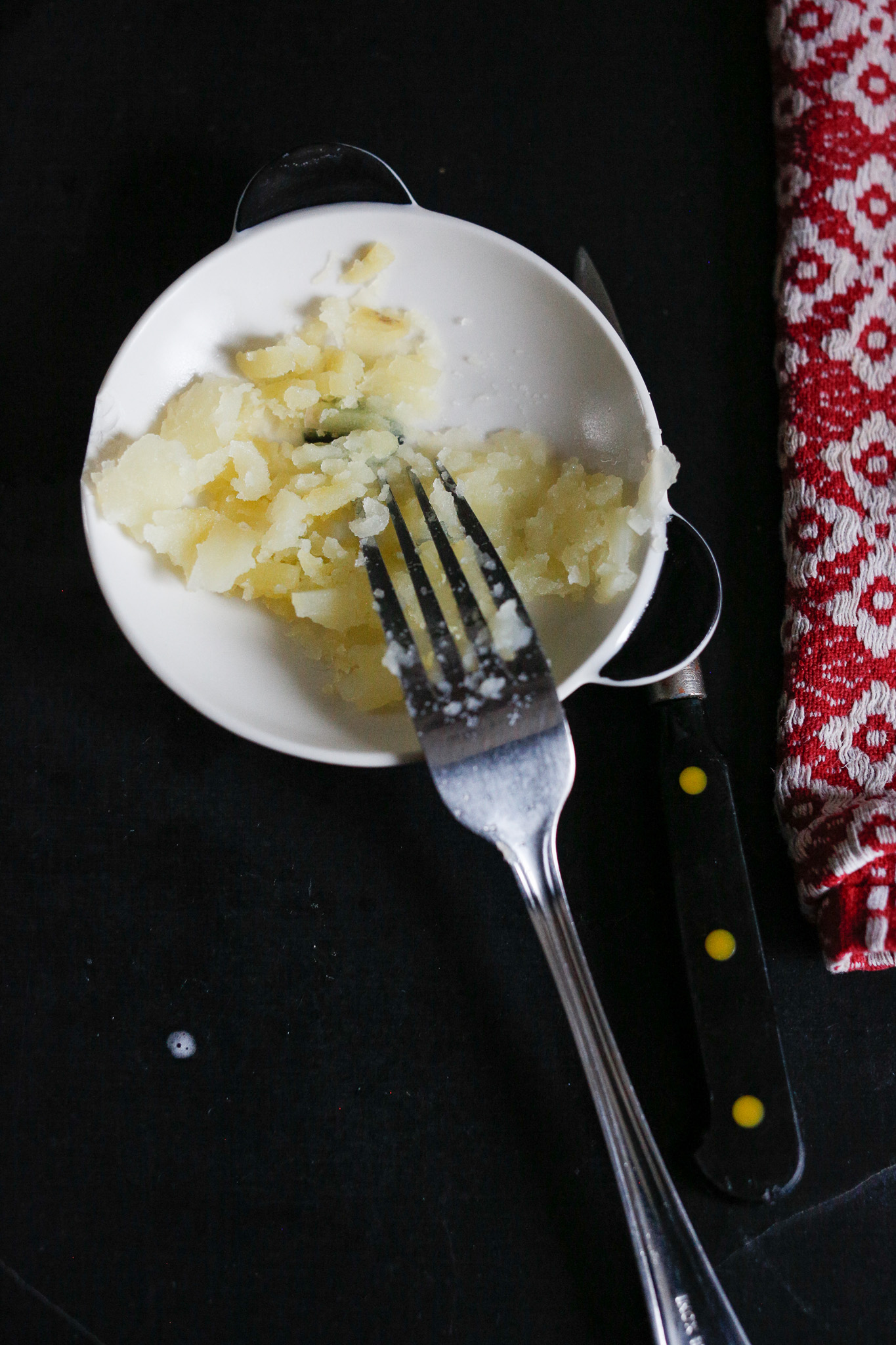
I am known for undercooking my potatoes so I'll take out a few and smash them to really know if they are cooked. Usually sticking a knife in them works. You want no resistance
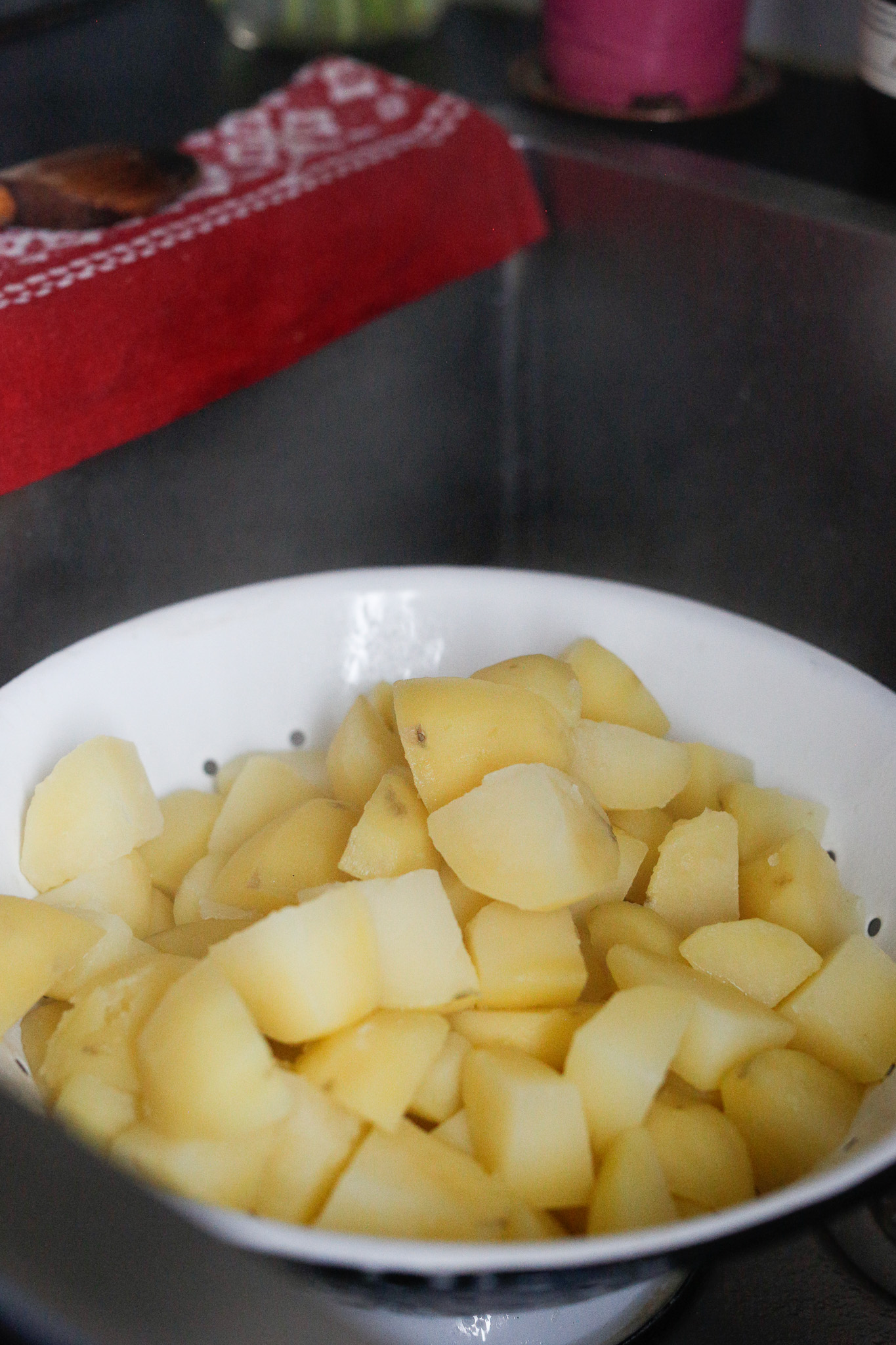
Once they are cooked, mindfully pour the pot away from your face, into a strainer
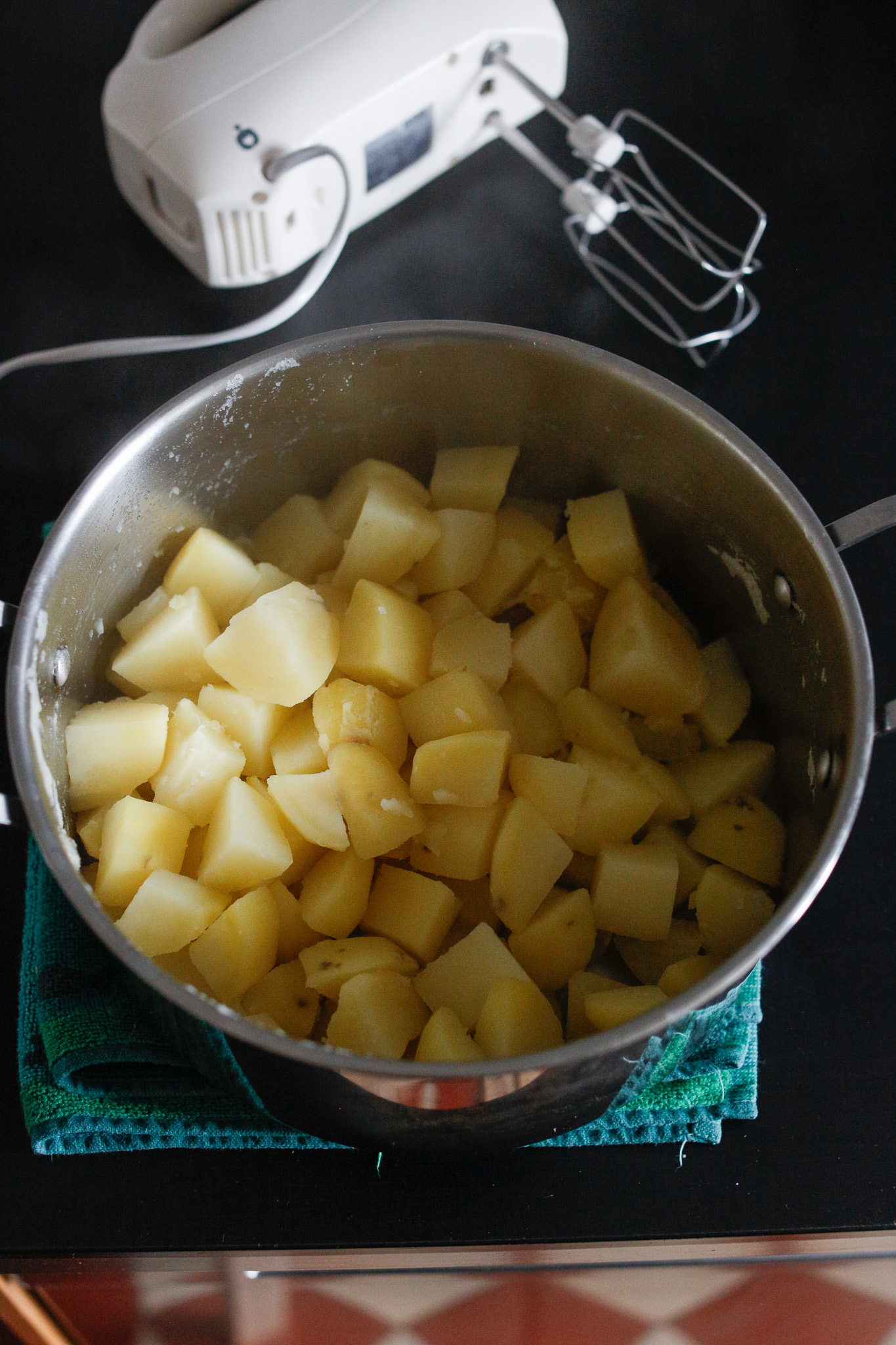
Back in the pot with your hand held beater to pre-crush your potatoes
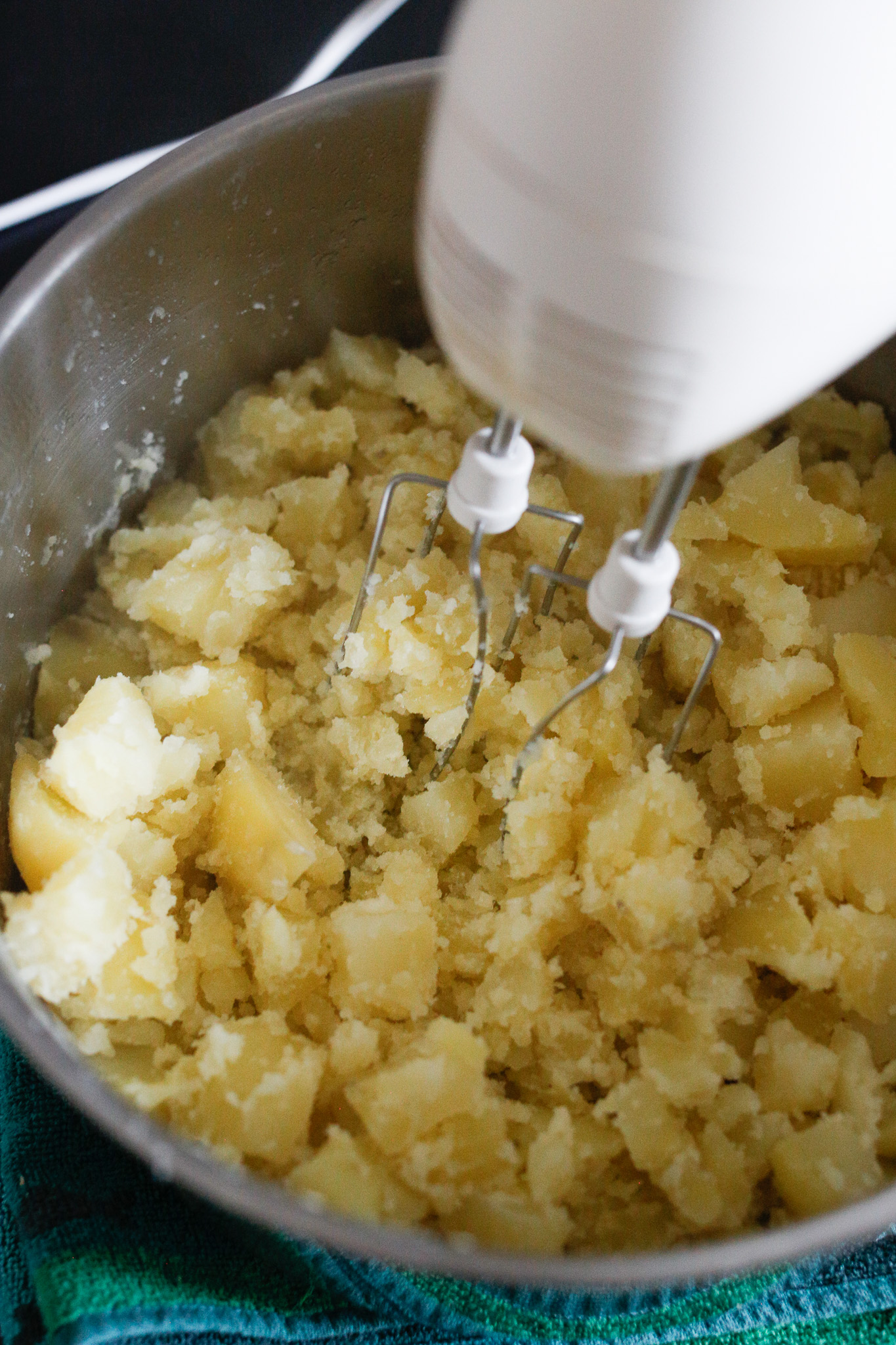
By pre-crushing you prepare the potatoes for an easier mix. If you have a standing mixer, hold the mixer in your hand and crush your potatoes
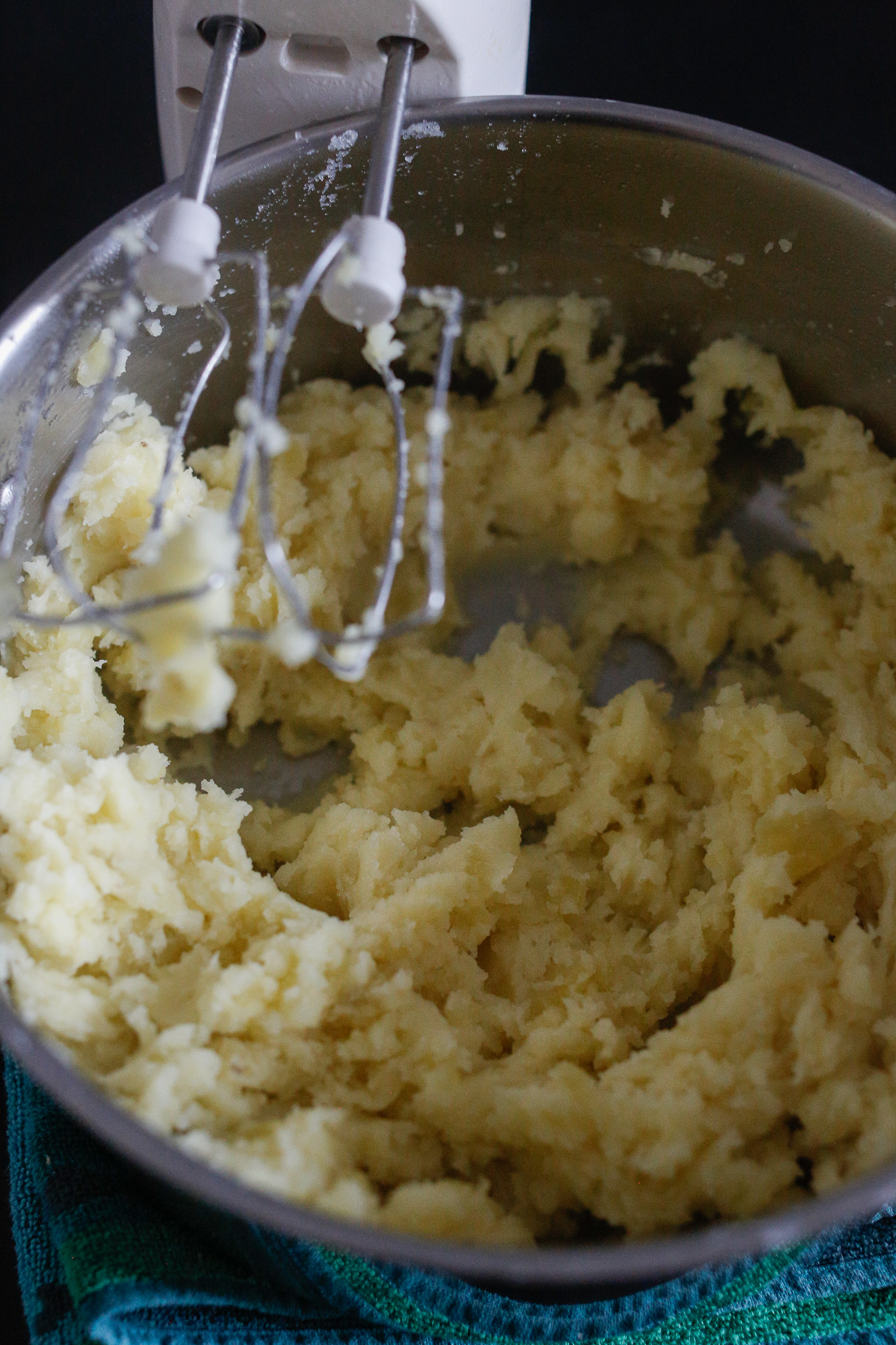
Beat them to about this point and add in half of your milk and butter
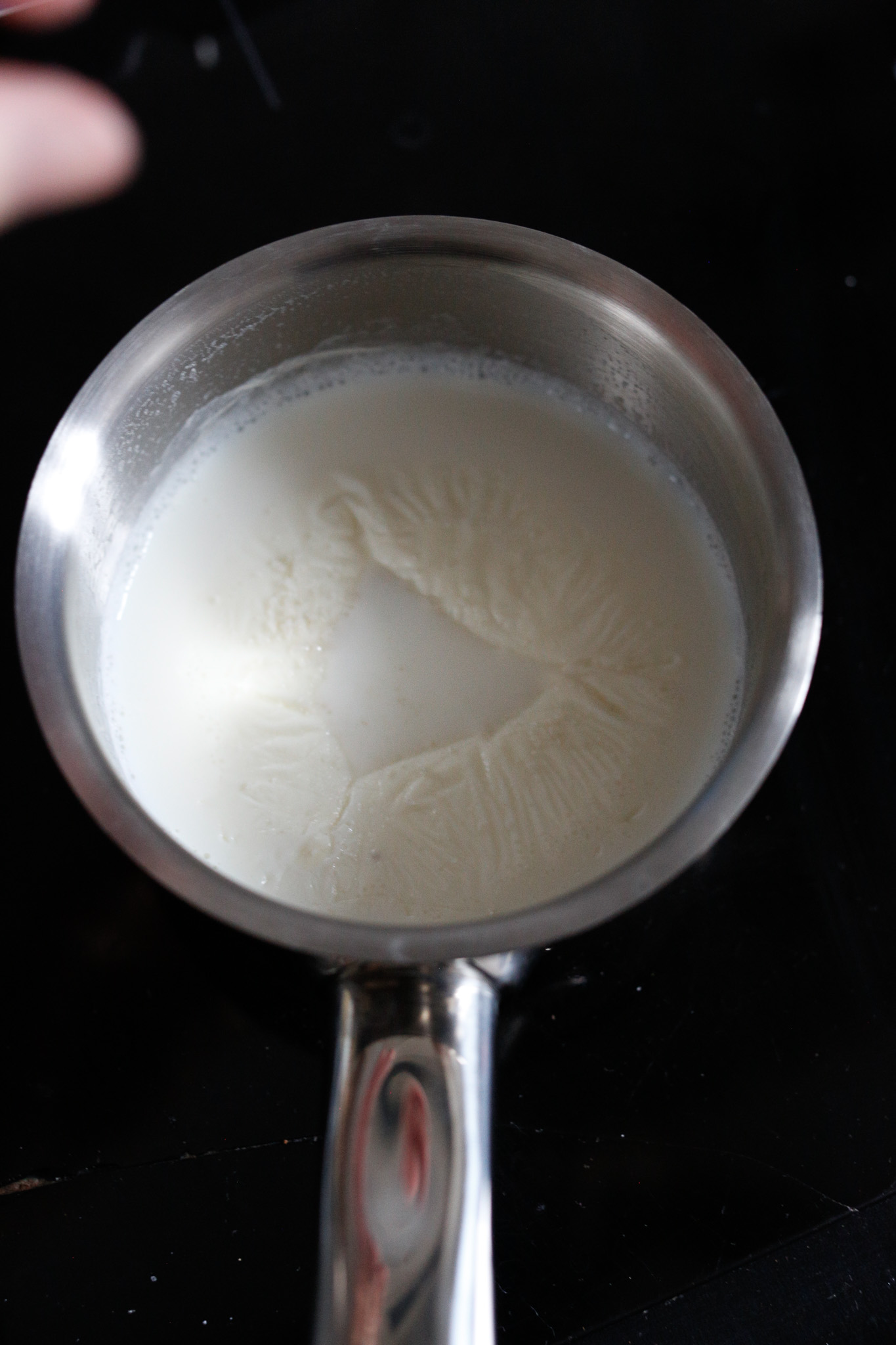
I warmed my milk too much but I still used it and the skin on top
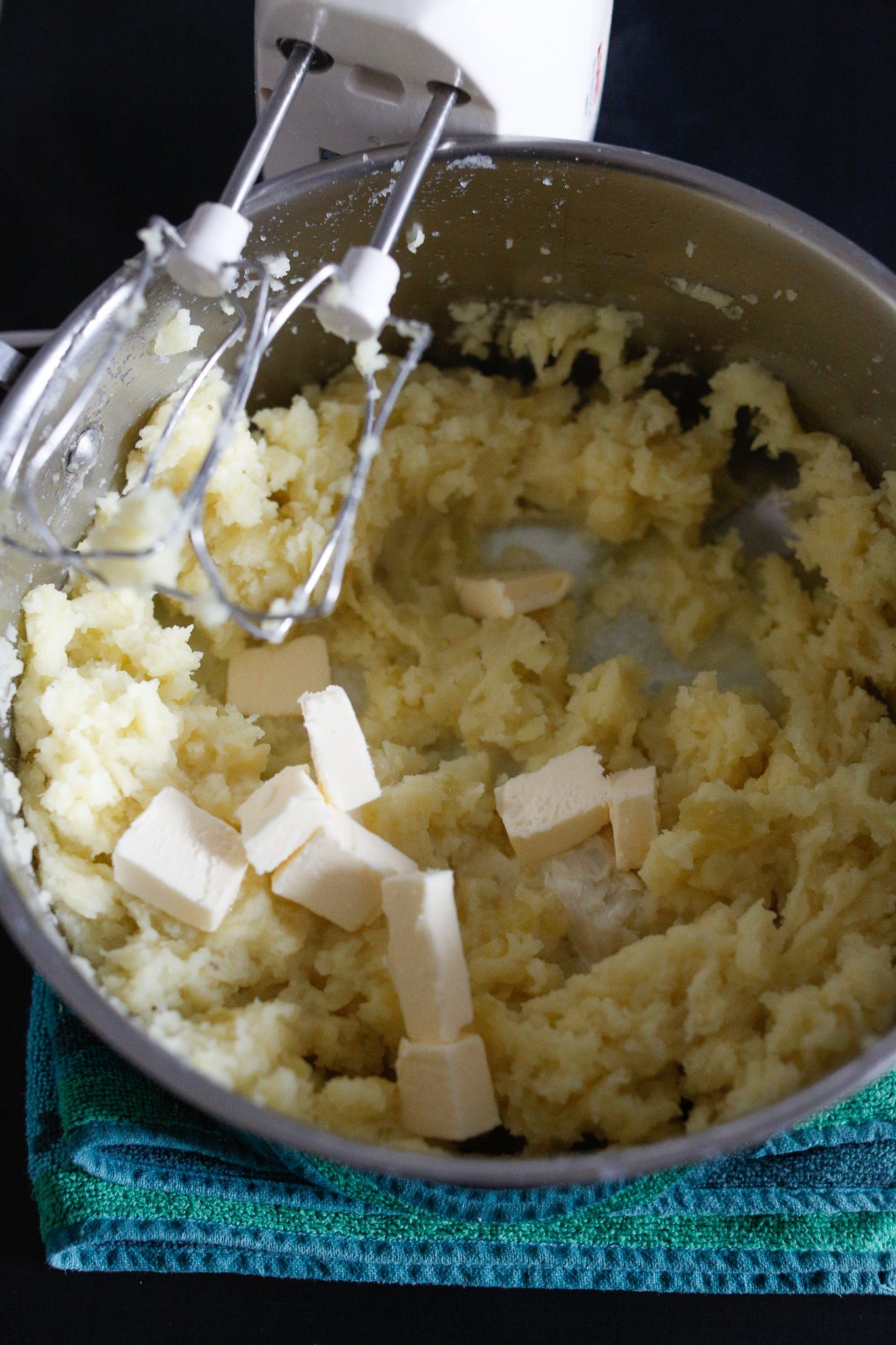
I like keeping the butter in cubes and allow it to melt slowly during the beating process
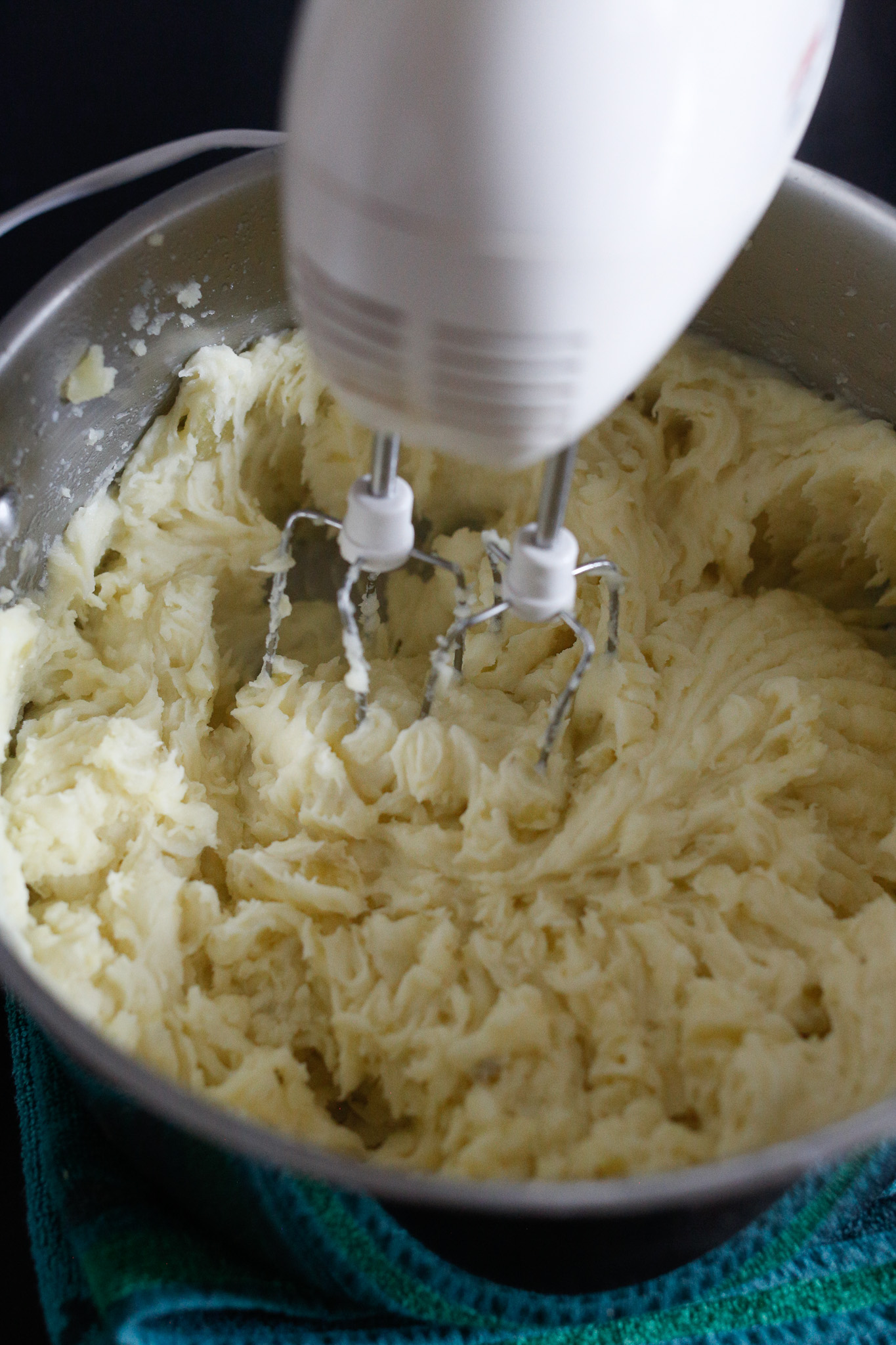
As you beat, continue adding in your milk. Your potatoes will get creamier and creamier
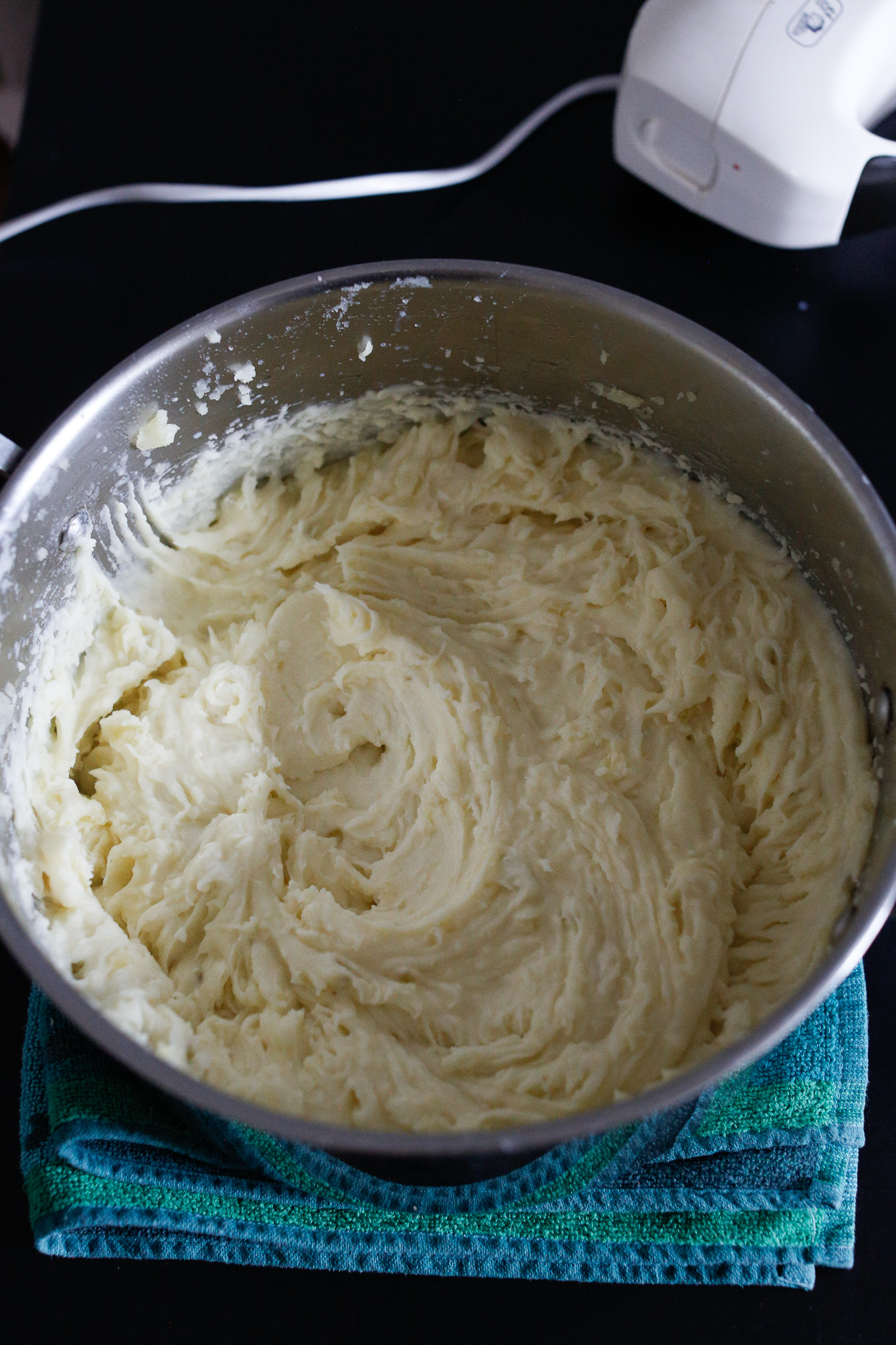
At this point you want to taste your potatoes and decipher if you want to add more milk for creaminess, more butter or salt to taste. Trust your palette!
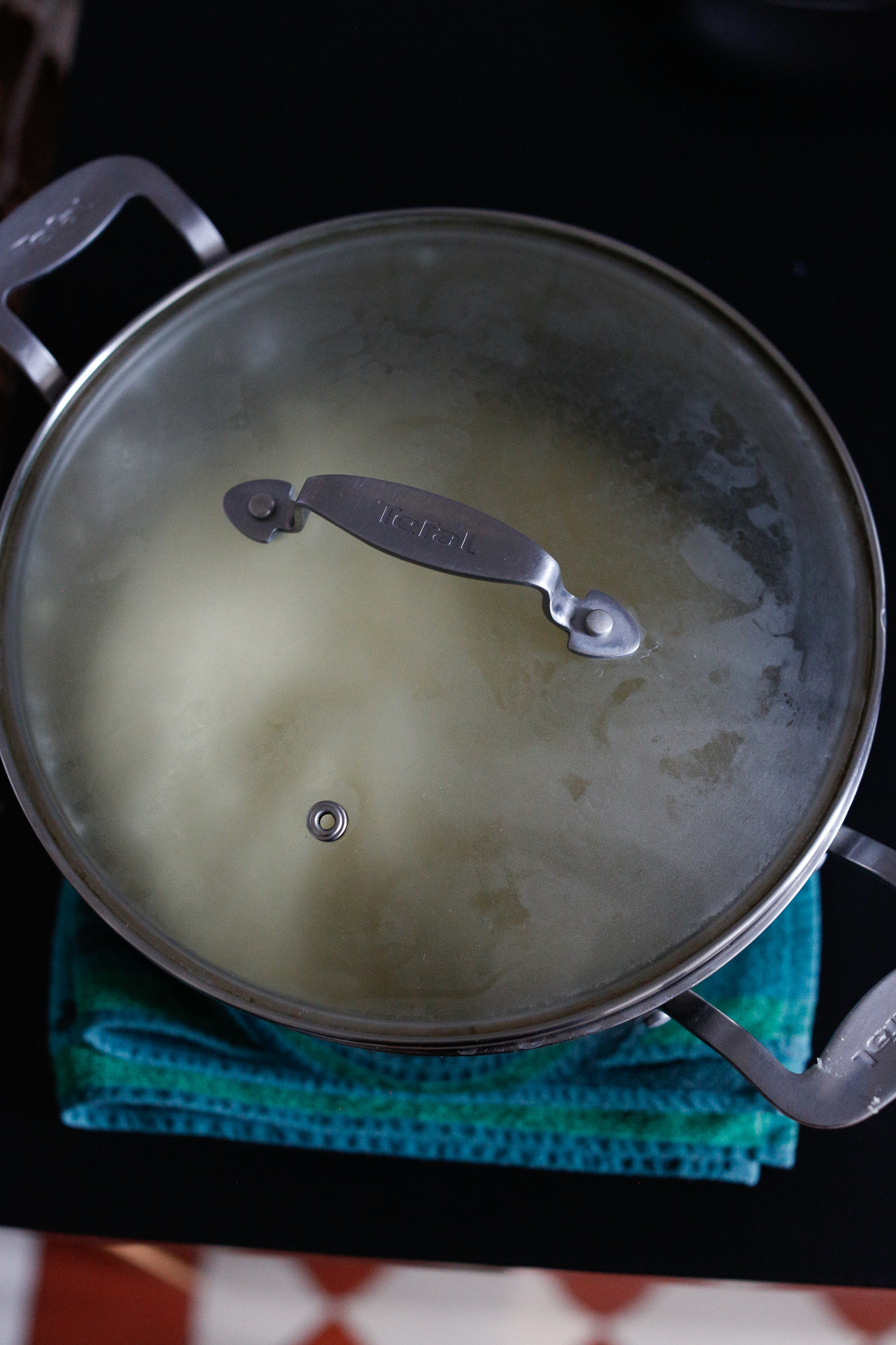
To keep warm, put your lid back on and the pot on a low heat, stirring frequently
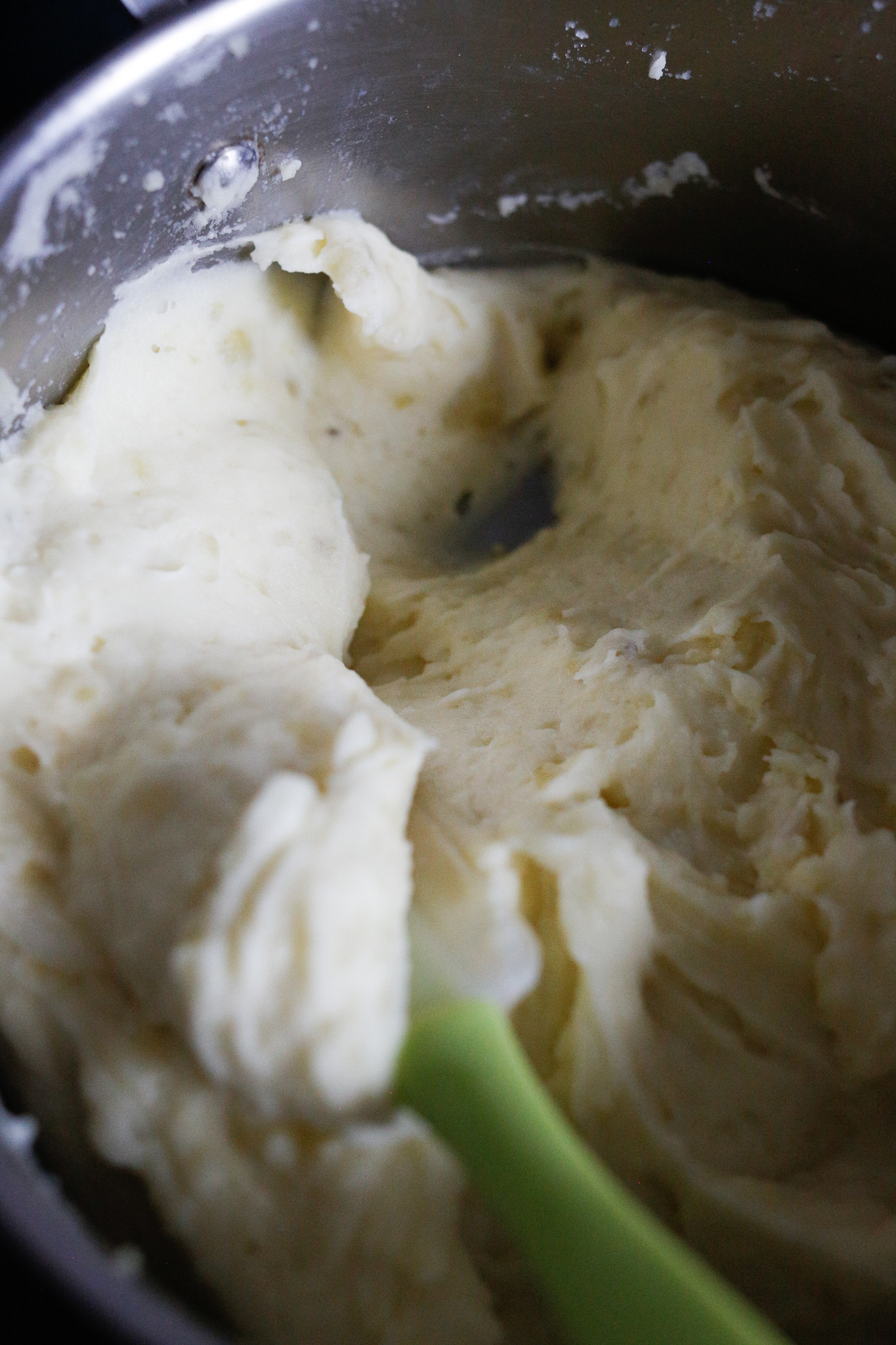
Yet again, I didn't cook my potatoes through so they had small lumps in them but they were still creamy and delicious.
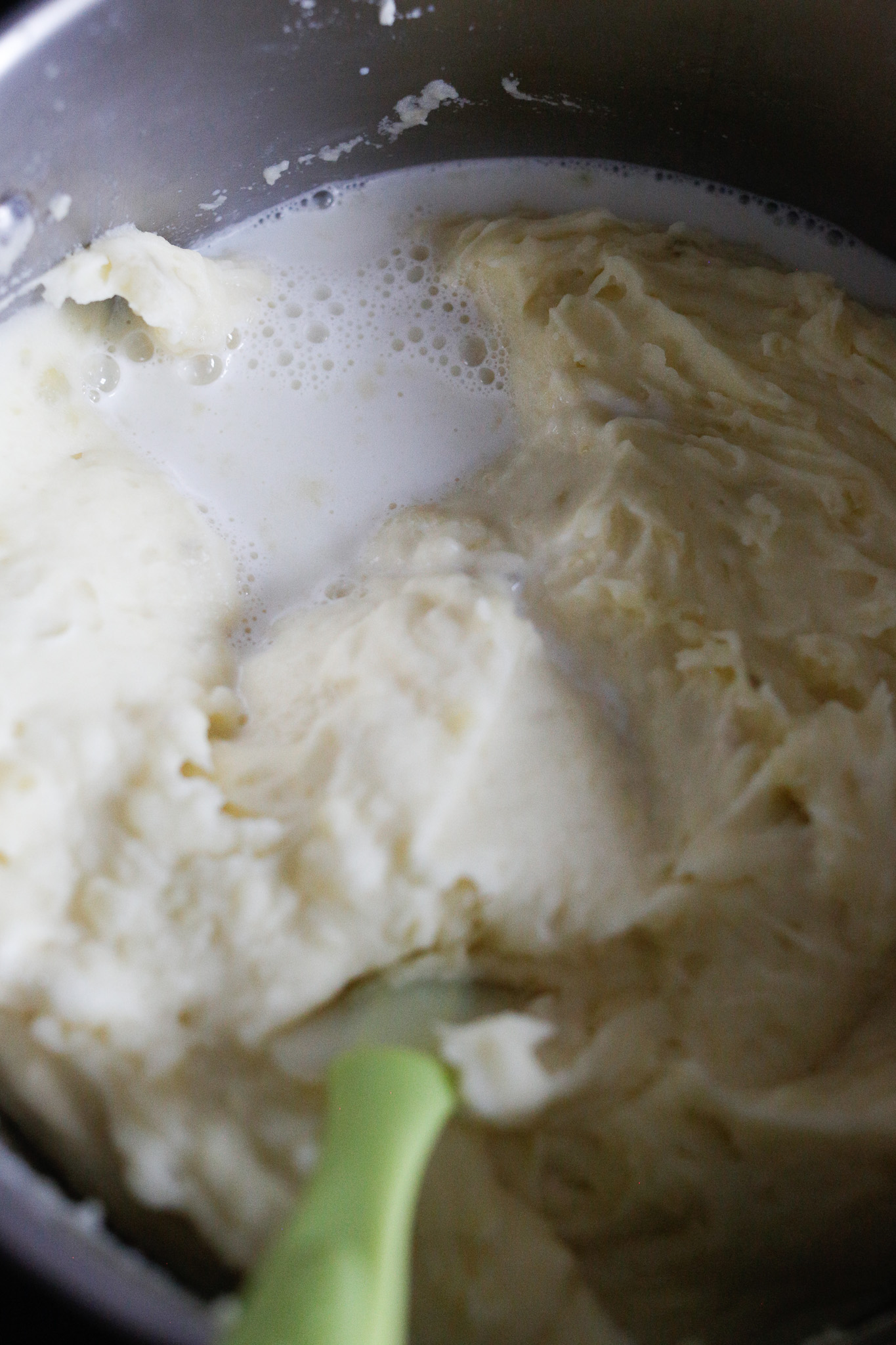
I added in some more milk and butter and salt to taste
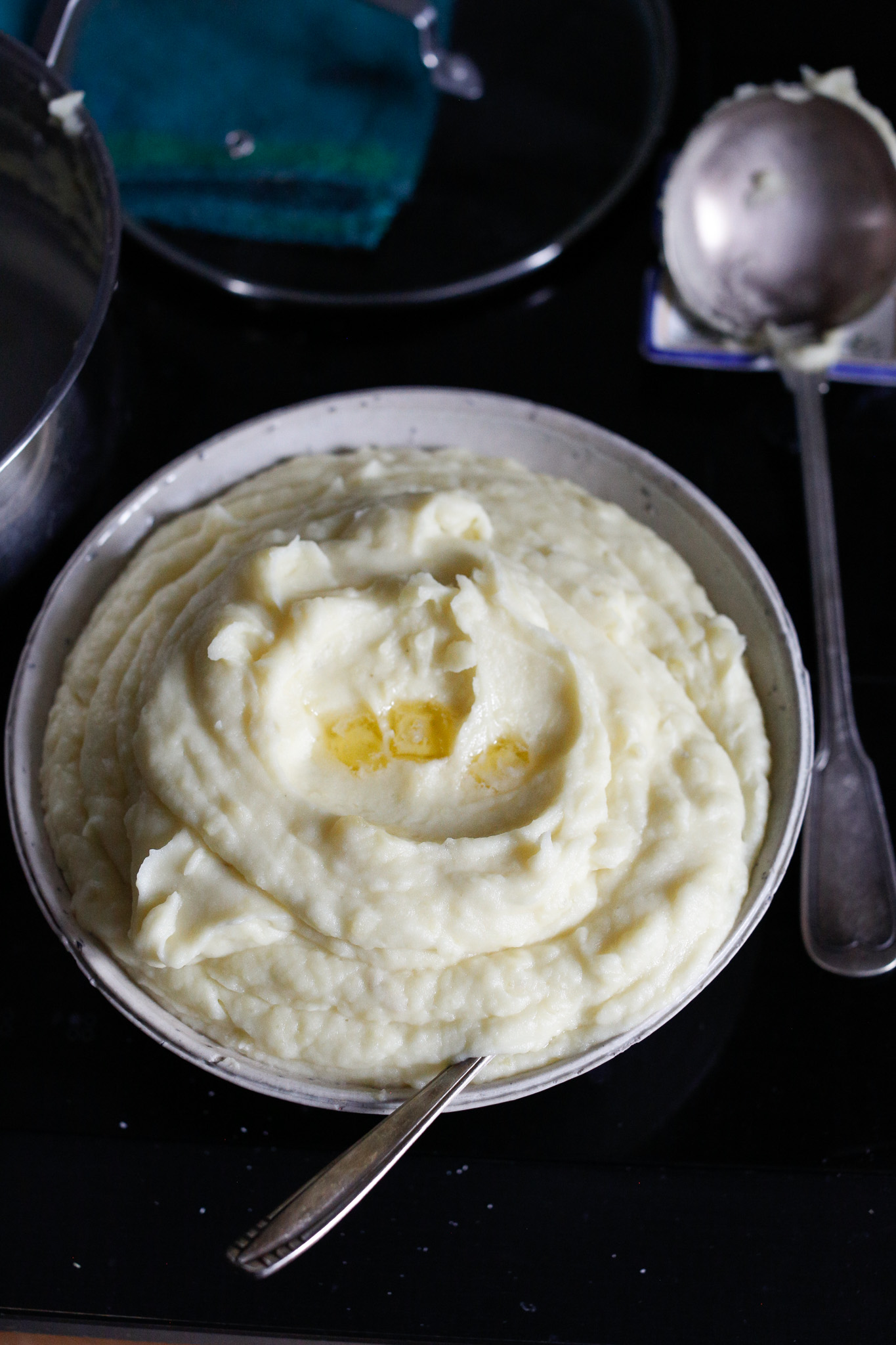
When you're ready, serve your potatoes directly from the pot or use a soup ladle to scoop them out into a serving bowl. One that has a lid ideal (unlike mine.) Add a few cubes of butter if you'd like. Serve immediately!
Story

If you grew up eating mashed potatoes, there’s a good chance you love the version that your parents made you. Make those! I’m always for honoring your favorite recipes especially if they are family recipes. But if you don’t have a go-to or are looking for a new yummy recipe, you are welcome to try my mom’s. These are a creamy style of mashed potatoes and I find them very simple to make and of course delicious.
Selecting a potato that is mash friendly is encouraged. Russet, Idaho or Yukon Golds are the go-to potatoes in the US. In France, they’ll be Bintje and Agata. If you go to a farmers market, ask your farmers what they recommend, they can guide you and often have their own variety for a mash or soup. It’s always a good idea to support the farmers directly.
Once you make them, serve right away or keep them warm on a low heat on the stove with a lid on top. Add some water or milk if they feel dry and stir often. Enjoy.
